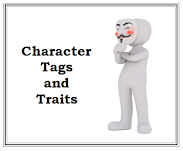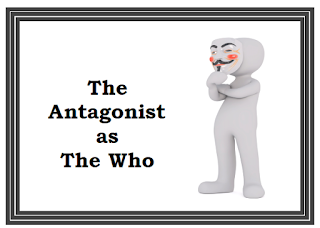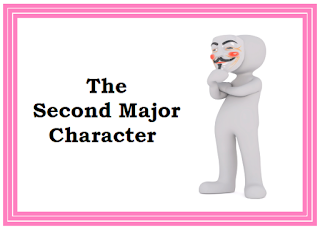Part 11 of 12 of Job Titles for Story Characters
© 2020 All Rights Reserved
Hair and eye color are nice to know, but what makes a character tick—how he’ll respond to stress, his fears and desires are what’s really important to give you all the delicious tension and growth an I-can’t-put-this-book-down story needs. — Silvie Kurtz
I've periodically mentioned writers using a character questionnaire or character worksheet to quickly get at the personality of the story's main characters. Unfortunately, it's mind-boggling what you can find in the way of character worksheets and characterization forms online. One site I stumbled across a couple years ago had hundreds of questions, even including the color of the character's kitchen sink!
In truth, it doesn't hurt to look over a lot of such questionnaires and worksheets, just don't use them as is. What you want to do is incorporate questions into your own "cheat sheets" that will quickly define and bring to life your main characters. Strive to keep that form as simple and uncomplicated as possible to avoid getting bogged down filling in blanks or checking off boxes.
Producing writers don't waste time. Producing writers rely on their own, customized forms so they get at the core values of their main characters that helps ensure a viable plot.
Here's a secret — ONLY ONE MASTER FORM IS NEEDED. That "cheat sheet" works for the protagonist and antagonist. And, it's also used for a story with a Second Major Character who has Point of View-Viewpoint and without whom the plot will fail.
All other characters are minor characters and do not need detailed work-ups (when they become heroes or heroines of their own books, then it's time to use the master questionnaire).
Using one master form means asking THE SAME QUESTIONS to the main story characters. Doing so reveals how the characters are fundamentally the same and how different they are. Those differences make for well-rounded characters and allow for an engaging and workable plot.
Working with "cheat sheet" forms is more than jotting in an answer. It's about asking the right questions and, more importantly, asking WHY or looking deeper into WHAT THE ANSWER MEANS.
There are some common, fundamental, questions that appear on nearly every worksheet or questionnaire and those are below. I've also added in the WHY and WHAT factors to consider:
1) Character's name — first, middle, last, initials, and nickname (if applicable).
Be sure the initials do not spell something derogatory, unless you're writing comedy or irony, that is. Evaluate every name for the meaning, how the name looks, sounds, etc. –- Refer to "Naming Characters," which was the September 2020 Writers Cheat Sheet blog topic.
2) The character's function in the story.
That is, what is their "job title" for the story. Is it Protagonist, Antagonist or Second Major Character (like the Romantic Lead, Mentor, Sidekick, etc.). Remember, each job title has a set of specific tags and traits.
3) Age
Why that age? Does this character look their age? Older? Younger? Do they feel their age? What advantage or disadvantage does that age give the character in life or on-the-job? (i.e., An 18-year-old doesn't have the maturity of a 50-year-old.)
4) Sex or Sexual Orientation
How do they feel about their sexuality? If applicable, what kind of lover are they (both how they see themselves and how their partner or partners see them sexually, sensually).
5) Marital status — single, married, divorced, widowed/widower, with a significant other, etc.
How do they feel about that status? If divorced, what caused the divorce? Are they a confirmed bachelor/bachelorette, and why?
6) Occupation
This is about what the character does to make a living. Why did they choose that occupation? Are they happy in their career? If so, why? If not, why?
7) Distinguishing physical characteristics (scars, tattoos, blemishes, etc.)
This is where you-the-writer describe their physical attributes of height, weight, eye and hair color, shape of body and face, tone of voice, etc. Always ask Why that hair color? Why that eye color? The answers can yield clues to tags and traits. Tip: people react to colors on a subliminal level, for instance, blond often equates to "dumb blond" whereas someone with earth-brown hair is seen as "down to earth." You could have a smart blond or a dumb brunette, but you'll have to work a bit harder to convince the reader that you've gone against the stereotype.
8) Personality traits — the "internal," intangible (abstract) of their character.
Are they basically a pessimist or optimist? Note: I've found using percentages works best for me because no person or character is 100% pessimistic or optimistic. It's also wise to record the character's level for being an introvert or an extrovert. And ask, how do these traits affect their actions when under stress or in their normal day-to-day life. Or even, how do such traits mold their character?
9) Habits - what are their concrete habits (thumping a pencil, biting nails), speech-diction (formal, informal, use of slang, or repetitive phrases, diction, syntax), etc.
What triggered or triggers the habit? How do they typically react to fear, love, hate, anxiety? If afraid, do they stand and fight, freeze in place, or flee?
10) Background — their genealogy, their family and their social class, monetary status.
This includes their education (as in schooling or military service), the nationality influences of their family-upbringing (Christian, Jewish, Southern Baptist, and so on, and what holidays they love or hate or celebrate), previous jobs (and, if applicable, why they left them).
11) What is this character's greatest strength?
Most likely it's one of the 7 Cardinal Virtues, or perhaps a few of Aristotle's 12 Virtues, which you can look up on the Internet.
12) What is this character's greatest weakness (their Achilles' heel)?
Most likely it's one of the 7 Deadly Sins — either the Biblical ones or the Modern ones, which you can look up on the Internet.
And here is a bonus to consider putting on your form: What is the character's self-concept? To get the self-concept, have the character answer this question: "I am . . . " (fill in the blank with whatever the character says, which will be a short phrase). Examples include: I am a self-made man, or I am a disillusioned soldier (corporate executive, etc.), or I am a closet romantic, or I am always the bridesmaid never the bride . . .
So that's the starting lineup of questions for a get-to-know-your character questionnaire. Where you go from there will depend on the type of genre you write, the information you feel is vital in getting to know your main characters, and looking at dozens of character forms to get ideas on format (arrangement of the items) and the question-content you want to add to your form.
And, remember — only include what is useful and helps you discover a three-dimensional character that readers will recognize.
*************
Next Month - 2020 — December — A Summary
~~~~~~~~~~~~~~~~~~~~~~~~~~~~~~~~~~~~~~
To all who are participating in NaNoWriMo, I wish you success with your word quest!
# # #














